A familiar tree but some new story related to it!
The Ficus religiosa of Pimpal or Peepal.
.jpg)

A khatta-meetha take on life around me through my presbiopic eyes!
A familiar tree but some new story related to it!
The Ficus religiosa of Pimpal or Peepal.
.jpg)
Todays plant is a massive woody liana (creeper) whose trunk can compete with that of any tree. Yes, I am referring to the Bauhinia vahlii of the Caesalpiniaceae family. Though it belongs to the foothills of the Himalayas there are two of them growing quite happily in Pune.
You can read the post here as well..
Here you go…



Have you seen this plant?
If you are unable to comment here, you can share your thoughts here.
I am joining Parul in her ThursdayTreeLove bloghop. Do head over to see fantastic trees from around the world. Better still, join in!
Todays tree is unusal species in Pune .. The Ficus natalensis which is a non native and lives in a public park. It has triangular leaves with a typical forked vein.
This tree seems to be dancing.. either it has multiple branches right from the base or more than one sapling was planted together.
Either way, it has a dramatic effect!
.jpg)


I am joining Parul in her ThursdayTreeLove bloghop. Do head over to see fantastic trees from around the world. Better still, join in!
This post can also be viewed here.
Sharing a tree from Pune… many of us already know its fruit… the Reetha or Soapnut tree.
Read more about this tree here. Some images from the other post follow.
.jpg)

.jpg)
Reetha goes by the botanical name Sapindus emarginatus and belongs to the the Sapindaceae family.
This post is part of Parul’s ThursdayTreeLove blog hop.
I had several issues with posting on this space and issues with comments as well. Lets see how this post fares!
Moha aka Madhuca longifolia of the Sapotaceae family is an economically important tree . An indigenous species that provides sustenance to many especially those living in forests.
Here are a few images of the dry flowers and those growing on the tree.


Click here to read the full article.
I am joining Parul in her ThursdayTreeLove blog hop.
Here is yet another wonderful Tree Course.. oops.. I mean Golf Course .. from Pune.
Enjoying the trees at the course is one of the main reasons for me to accompany my husband for Golf.
You see see more images here.
This row of Ficus is the star attraction IMO. One of them has fallen but continues to flourish.
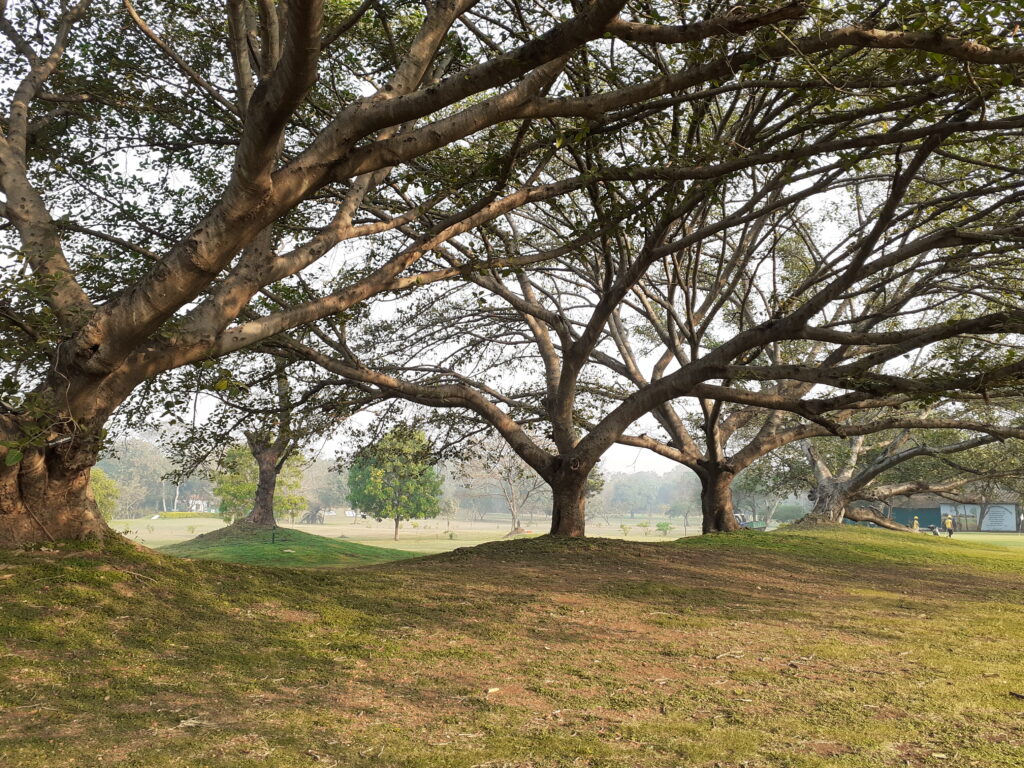

Please click here to see more images of this Golf Course.
In case you face difficulties in leaving your comments, please click here. I would love to hear your thoughts. Thanks!
I am joining Parul in her ThursdayTreeLove blog hop. Do head over to see fantastic trees from around the world. Better still, join in.
I had a different tree in mind for todays post but I just read Parul’s TTL 132 post and decided to share some plants from my home balcony garden.
To be more specific, three plants that are so called ‘cousins’.
They belong to the same Genus of Malpighia but the specific epithet is different. Hence they are different species. I am growing them to be Bonsai and they do grow as trees in Nature.
They all belong to the family Malpighiaceae and you can see the distinct flower similarity. The frilly flowers are very pretty but not fragrant. The three plants I am sharing all have simple opposite leaves.
Click here to read detailed post.

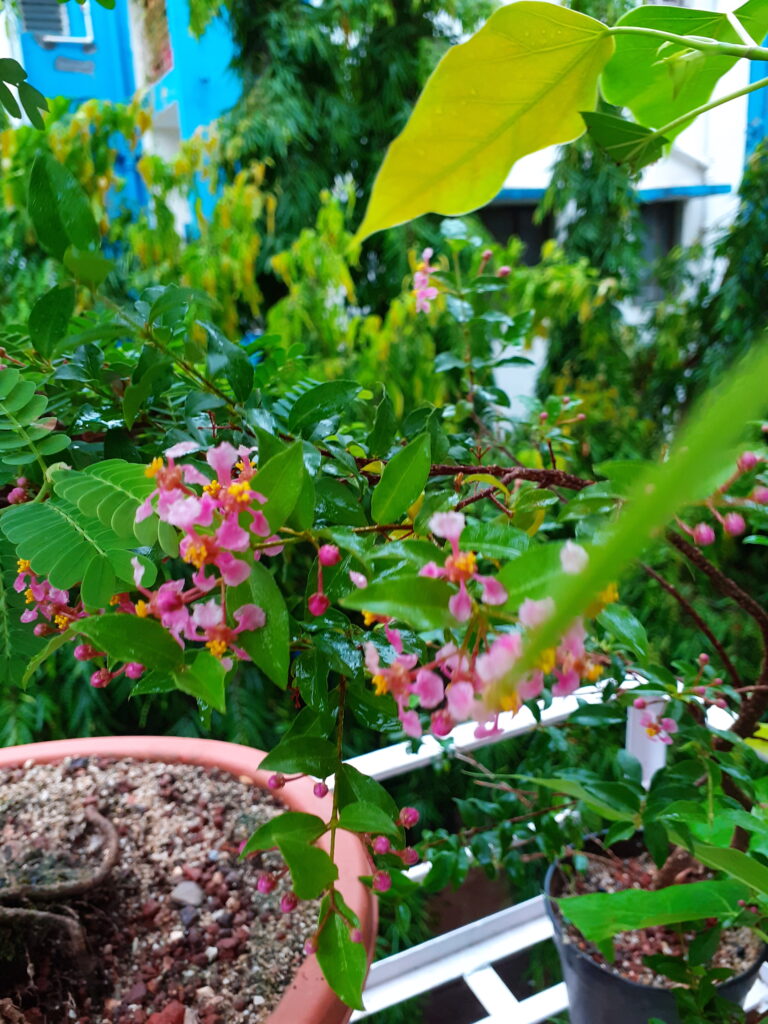
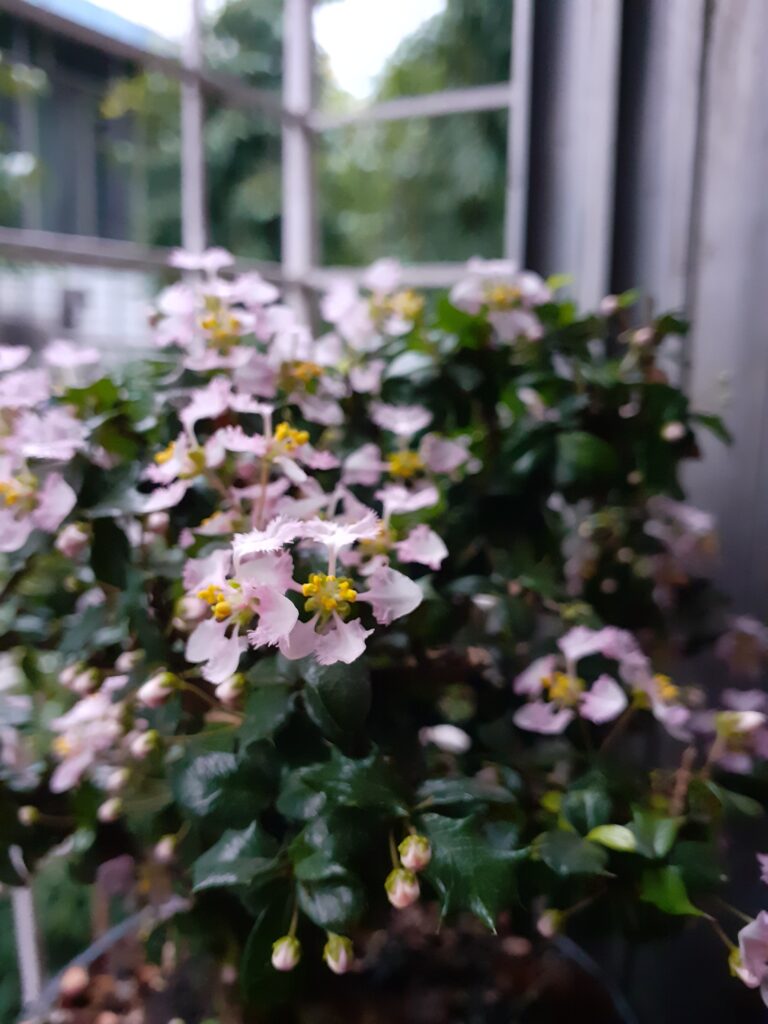
I am joining Parul in her ThursdayTreeLove blog hop.
In case you face difficulties in comments, please click here to share your thoughts. I would love to hear from you. Thank you!!
As the mango season ends, its time for yet another fruit to capture our food senses! The Jamun or Syzygium cumini of the Myrtaceae family is available in plenty in June-July as the Alphonso harvest comes to an end.
The tree has just finished flowering and that is how it finds a place in my TTL post. The unique flowers are hidden among the glossy green leaves.
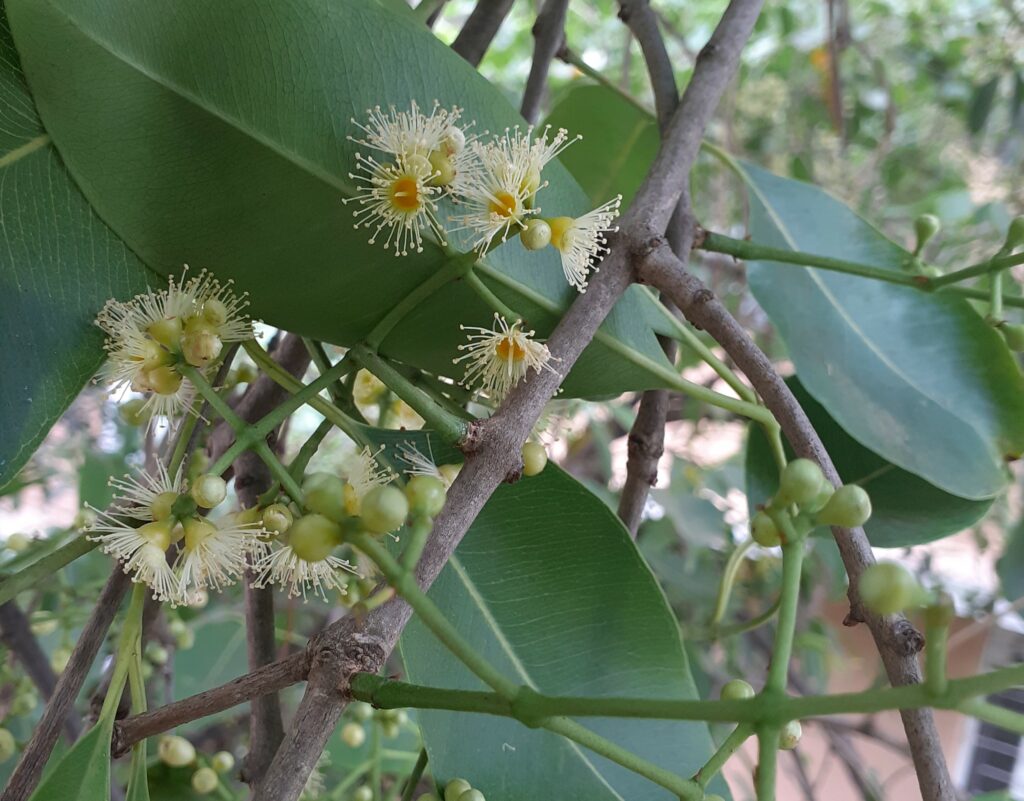
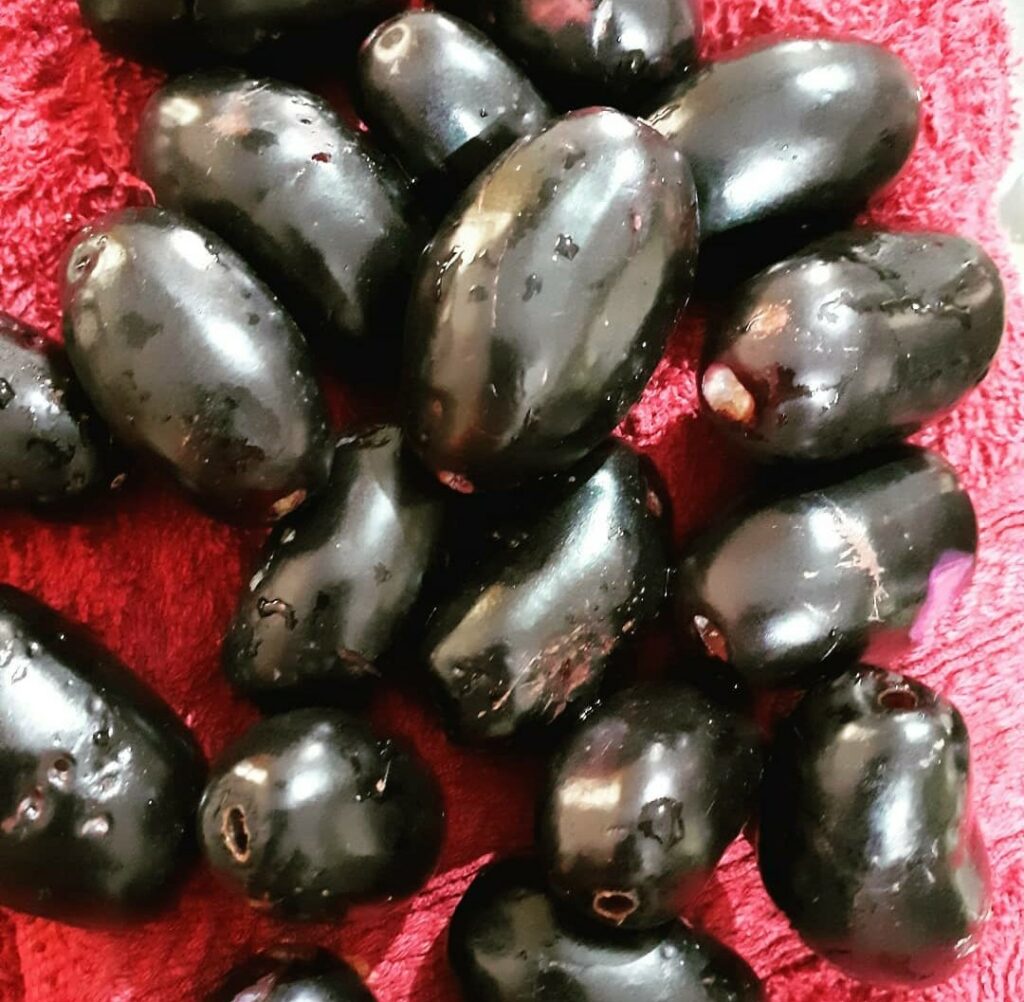
The fruit is delicate and crushes easily. Monsoon showers bring down some fruit that then colours it purple. Expert tree climbers are required to pluck the fruit from the trees. The fruit has a sharp taste and stains the mouth when eaten. It will also stain clothes if one is clumsy when eating!
Jamun is not among my favourite fruit but those who do like it are its dedicated fans!
Have you seen the Jamun tree? Do you like Jamuns?
I am joining Parul in her ThursdayTreeLove blog hop. Do head over for some wonderful trees from around the world. Better still, join in!
Despite my best efforts at trying to resolve commenting issues on this blog, some of you, dear readers, may find it difficult to share your thoughts. Please click here to leave your comments . I would love to hear from you. Thank you for your patience!
May has been unusually hot this year in Pune with no signs of summer showers. Yet the trees seem to be loving the heat.
Especially the Delonix regia of the Caesalpiniaceae family. Better known as the Gulmohor or the Mayflower.
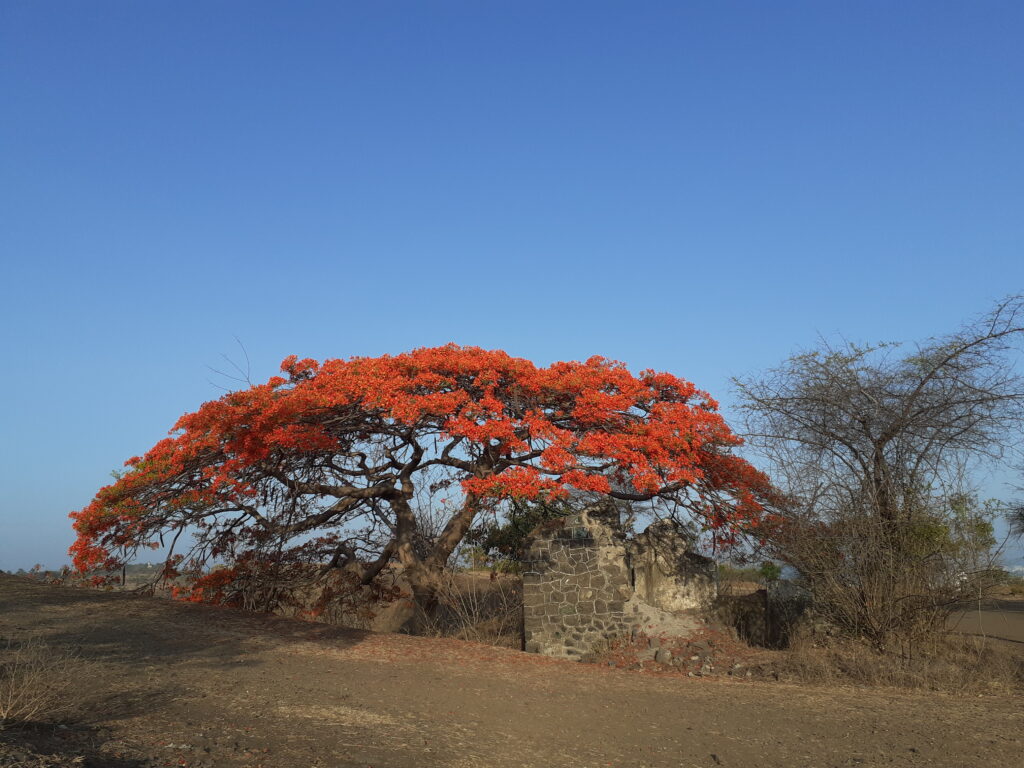

Thisis a wonderful Ficus growing on my regula walk route. It’s full of fruit and birds are having a feast!

Ficus is a genus of the Moraceae family. Many Ficus varieties grow in Pune and around India. Either as roadside trees or in gardens and in temples.
Have you seen birds feasting on a Ficus? It’s a great place for birders to see different bird varieties.
I would love to hear from you. If you face issues in commenting below, pleas click here to share your thoughts.
I am joining Parul in her ThursdayTreeLove bloghop. Do head over to see fantastic trees from around the world.